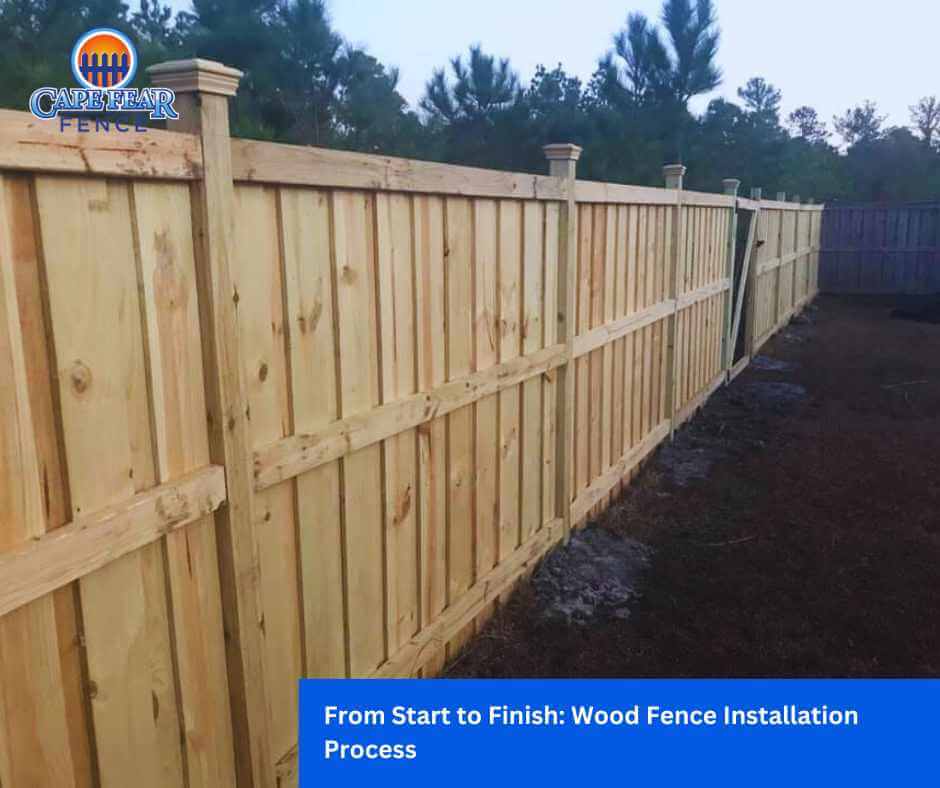Wood fences not only enhance the aesthetics of your property but also provide privacy and security. If you’re considering installing a wood fence, understanding the process from start to finish can make the endeavor smoother and more successful. In this comprehensive guide, we’ll take you through each step, ensuring that you’re well-equipped to embark on your wood fence installation journey. Whether you’re in the heart of Old Town, NC, or anywhere else, this guide will help you navigate the process with confidence.
Understanding Your Needs
Assessing Your Property’s Requirements
Before diving into the wood fence installation process, it’s crucial to assess your property’s unique requirements. Consider the purpose of the fence—is it for privacy, security, aesthetics, or a combination of these? Evaluate the terrain, taking note of any slopes, uneven ground, or obstacles that might impact the installation process. By understanding your property’s specific characteristics, you can plan accordingly and choose the most suitable design and installation approach.
Choosing the Ideal Wood Fence Design
Selecting the right wood fence design is a significant decision that affects both the functionality and the visual appeal of your property. Are you leaning towards a classic picket fence, a robust privacy fence, or a decorative lattice design? Each design serves different purposes and has its own unique charm. Consider factors such as the architectural style of your home, local regulations, and personal preferences. The design you choose will set the tone for your property’s overall aesthetic, so take the time to explore options that resonate with your vision.
Gathering Materials and Tools
Selecting the Right Type of Wood
The type of wood you choose for your fence can significantly impact its durability, appearance, and maintenance requirements. Different wood species offer varying levels of resistance to weather, insects, and decay. Here are a few popular options to consider:
- Cedar: Known for its natural resistance to decay and insects, cedar is a popular choice for its pleasant aroma and warm color variations.
- Redwood: With its rich tones and resistance to decay, redwood is a premium option that adds elegance to any property.
- Pressure-Treated Pine: Treated for durability, pressure-treated pine is a cost-effective choice that withstands the elements effectively.
Essential Tools for the Job
Having the right tools on hand is essential for a successful wood fence installation. Here’s a list of tools you’ll likely need:
- Post Hole Digger: For digging holes to set the fence posts securely.
- Level and Plumb Line: Ensures the fence is straight and level.
- Circular Saw: Cuts the wooden panels and rails to the desired lengths.
- Hammer and Nails: Used for attaching panels and rails.
- Screws or Nails: Essential for securing fence components together.
- Measuring Tape: Ensures accurate measurements for precise installation.
- Concrete Mix: For stabilizing fence posts in the ground.
- Safety Gear: Includes gloves, safety glasses, and ear protection for safe installation.
Preparing the Ground
Clearing the Area and Marking Boundaries
Before you begin the installation process, it’s important to clear the area where your wood fence will be placed. Remove any debris, vegetation, or obstacles that could hinder the installation. This step ensures a clean slate and provides a clear view of the property’s boundaries. Once the area is cleared, mark the boundaries using stakes and string. This helps you visualize the fence’s layout and ensures accurate placement during the installation.
Ensuring Proper Measurements and Leveling
Step | Description |
Measure Property Perimeter | Accurately measure the length of your property’s perimeter using a measuring tape. |
Determine Post Spacing | Decide how far apart you want your fence posts to be. Typically, posts are spaced 6 to 8 feet apart. |
Mark Post Locations | Mark the ground where each fence post will be placed, using spray paint or stakes. |
Level the Ground | Use a level to ensure the ground is even and the posts will be properly aligned. |
Check for Slopes | If your property has slopes, measure the slope’s angle to adjust post placement accordingly. |
Proper measurements and leveling are crucial for a well-constructed fence. By following these steps, you’ll ensure that your fence is not only aesthetically pleasing but also structurally sound.
 Family Owned & Operated
Family Owned & Operated Licensed & Insured
Licensed & Insured All Service Guaranteed
All Service Guaranteed MENU
MENU FREE ESTIMATES
FREE ESTIMATES

